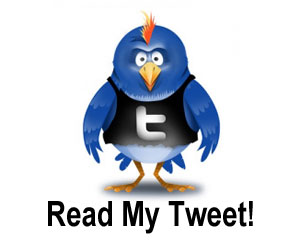Twitter has become the place for sharing content links. If your content catches attention on Twitter and spreads, suddenly you’re getting significant traffic from people who may have never visited your site before.
What you share on Twitter is not just about the actual value of the content. It’s also about whether the content gets viewed and appreciated in the first place.
… the difference is in the headline.
Your headline is the first, and perhaps only, impression you make on a prospective reader. Without a headline or post title that turns a browser into a reader, the rest of your words may as well not even exist.
Fact: On average, 8 out of 10 people will read a headline, but only 2 out of 10 will go on to read the content. (the old 80/20 Rule) This is in a typical headline environment, such as a newspaper, magazine, or web page.
Now, think about a Twitter stream…
People are scanning more ruthlessly than ever, looking for interesting tidbits. Your content link is competing with conversations.
Some people will tell you that a good Twitter headline is as short as possible. This is due not only to the 140-character limit that Twitter imposes, but also because in order for your headline to spread, people need room to retweet it. Twitter culture dictates that you give credit to the person who originally exposed you to a tweet when you retweet, so extra space is needed.
The mistake: Too many people, however, focus on “short” and forget about the “as possible.”
A better way to think about it is as long as necessary, but no longer.
Enter the Return of the Short Headline
- 95% of the most effective headlines from the early years of magazine advertising were eight words or less. This is because magazine copywriters had to write tight headlines due to space concerns, just like Twitter users.
- Studies done from the direct mail industry show that about 50% to 60% of the most effective headlines are eight words or less, leaving ample indication that longer headlines work, too.
- On a webpage, there are no space concerns, so web copywriters found that longer headlines communicated more benefit right at the top of the page where eye-tracking studies show people focus, and therefore worked better.
So, Twitter brings us back full-circle at a time when content is the new advertising. But it’s clear that a well-written short headline has power, especially when in a level-playing-field environment where everyone has the same constraints.
Time to up your headline game.
So what are the elements elements of solid headline writing?
Your headlines must:
- Be USEFUL to the reader,
- Provide him with a sense of URGENCY,
- Convey the idea that the main benefit is somehow UNIQUE; and
- Do all of the above in an ULTRA-SPECIFIC way.
More tips coming soon!
